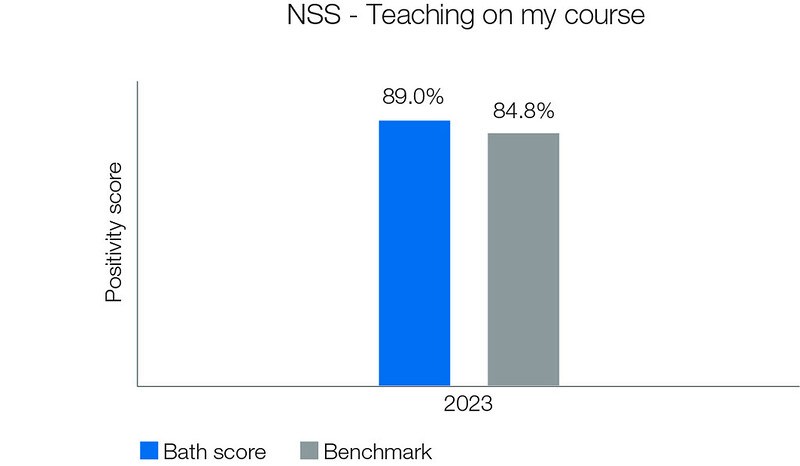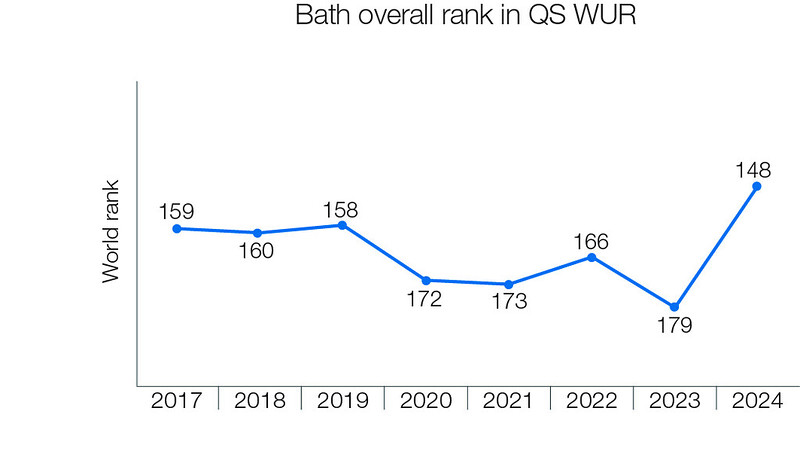Our strategy
Our vision is to be an outstanding and inclusive University community, characterised by excellence in education, research, and innovation, working in partnership with others for the advancement of knowledge, in support of the global common good.
We seek to advance our impact by:
- Driving excellence in education
- Delivering high-impact research
- Fostering an outstanding and inclusive community
- Enhancing strategic partnerships
To ensure that we are progressing towards the strategic goals, we monitor twelve strategic Key Performance Indicators (KPIs) outlined in the table below:
| Strategic Pillar | ||||
|---|---|---|---|---|
| KPI | Driving Excellence in Education | Driving high impact Research | Fostering an outstanding and inclusive Community | Enhancing Strategic Partnerships |
| 1 | National Student Survey (NSS) – teaching on my course | Income from research grants and contracts | Continuation rate | Consultancy & research contract income |
| 2 | NSS – satisfaction with assessment and feedback | % highly cited papers | Staff engagement index | QS world university ranking |
| 3 | Graduate outcomes | Knowledge Exchange Framework (KEF) research partnerships | % female professors | Local community engagement |
Note: Two of our KPIs – namely, teaching on my course and assessment and feedback – have been updated this year in line with the National Student Survey changes.
Driving excellence in education
NSS – teaching on my course
To ensure the quality of our teaching, we monitor the proportion of students that positively respond to questions within the teaching on my course section of the National Student Survey (NSS). We aim to exceed its benchmark score (a weighted sector average) by at least 2.5 percentage points. This year we exceeded the target with the score 89.0% compared with a benchmark of 84.8%. Since the 2023 survey was significantly different to previous iterations, the results are not comparable with prior years.

NSS – satisfaction with assessment & feedback
Bath is ahead of its benchmark group in six out of seven NSS survey themes. Assessment and feedback is the only section of the NSS where Bath is behind the benchmark. As such, this area has been prioritised for improvement and Assessment and feedback chosen as one of our twelve KPIs. Although scores are not comparable with prior years, Bath continues to move closer to its benchmark, suggesting that our improvement plan is working.

Graduate outcomes – progression to graduate-level employment or further study
Bath’s strong student outcomes are evidenced by its performance in the Graduate Outcomes Survey. With respect to each of the last four graduating cohorts of first degree students, Bath has met its target to outperform its benchmark by at least 2.5 percentage points. Bath’s progression rate continues to be amongst the very best in the sector.

Driving high-impact research
Income from research grants and contracts
Research income is seen as a key measure of the relevance, sustainability, and peer recognition of the University’s research activity. A target has been set to grow annual income to £75m by 2025-26. In 2022-23 Bath’s income was £45.0m, up from £40.5m the year before. Research awards – the pipeline of future income – grew from £47.8m (2021-22) to £63.3m (2022-23).

Percentage of highly cited papers
The University monitors the percentage of research papers that are highly cited as a measure of both the vibrancy and quality of its research. A target has been set to improve by 1 percentage point per annum, from a baseline of 18% to 23%, by the end of the current strategy period. In the most recent publishing period, our percentage of highly cited papers dipped slightly below its baseline, a trend that is consistent with the sector average. Nonetheless, this shift needs to be reversed and the University is currently running up-skilling workshops to help address this.

Research partnerships
The research partnerships indicator published by Research England as part of the Knowledge Exchange Framework (KEF) is composed of two underlying metrics:
- the cash contribution to collaborative research as a proportion of public funding
- co-authorship with non-academic partners as a proportion of total outputs.
Bath currently ranks in the top 40% of the sector (45th out of 135) for Research Partnerships. We are currently working on implementing a plan that moves it to the top 20% of the sector by 2025-26.

Fostering an outstanding and inclusive community
Continuation rates
First degree continuation rates are monitored as a measure of how supportive our learning environment is. Increasing to 98% in 2020-21, we continued to exceed its target of 95% or 2.5 percentage points above the benchmark. Bath’s continuation rate remains amongst the very best in the sector.

Percentage of professors who are female
This metric allows us to measure one element of diversity within the staff population and the effectiveness of efforts to address the gender gap at senior levels. Despite the year-on-year volatility, the overall trend has been upward and is something that we will continue to improve.

Staff engagement index
This indicator is based on a set of questions from an internal work and well-being survey. The questions relate to staff’s pride in working for us, support provided by their manager, feeling part of a community, and satisfaction with work-life balance. We have seen improvements over the last 18 months and have plans in place to continue on this upward trajectory.

Enhancing strategic partnerships
Income from consultancy and contract research
Income from consultancy and contract research is an indicator of the strength of our partnerships with business and industry. Bath aims to grow by 5% per annum from a baseline of just under £5m to £6.3m by 2025-26. We reported rises in 2021-22, with plans to further accelerate this growth over the coming years, primarily driven by IAAPS increased research contracts.

QS World University Rankings
We use the Quacquarelli Symonds (QS) international rankings as a measure of international peer recognition, which should be strengthened by our educational alliances and research partnerships. In recent years our overall ranking has fluctuated between a high of 158th and a low of 173rd. Currently, we are ranked 179th and our target is to be ranked higher than 150th by 2025/26. To facilitate an improvement, we have created a Working Group to consider the actions required to improve our ranking.

Local community engagement (attendees at public events)
Our number of attendees at public events, is an indicator of social, community and cultural engagement. The number will fluctuate from year to year, but a target has been set for an average of 70,000 attendees a year. Largely due to COVID-19, we have seen lower engagement over the last two years. We are currently seeing encouraging signs of recovery.
